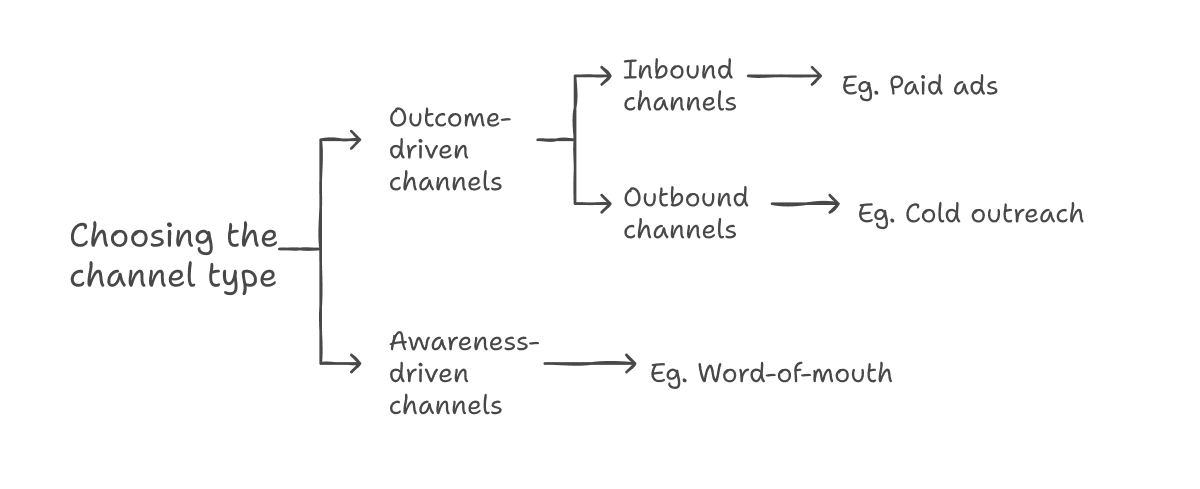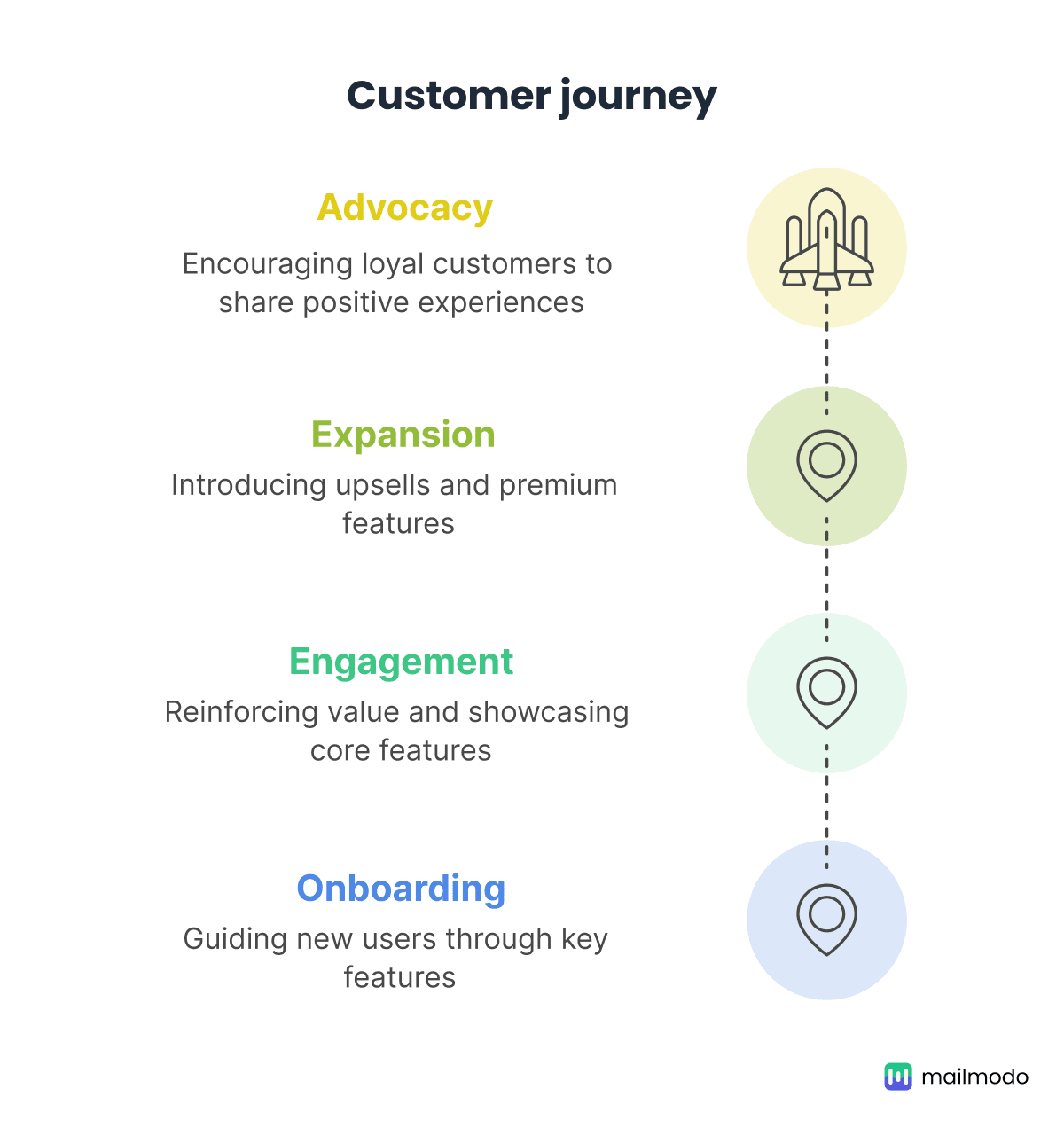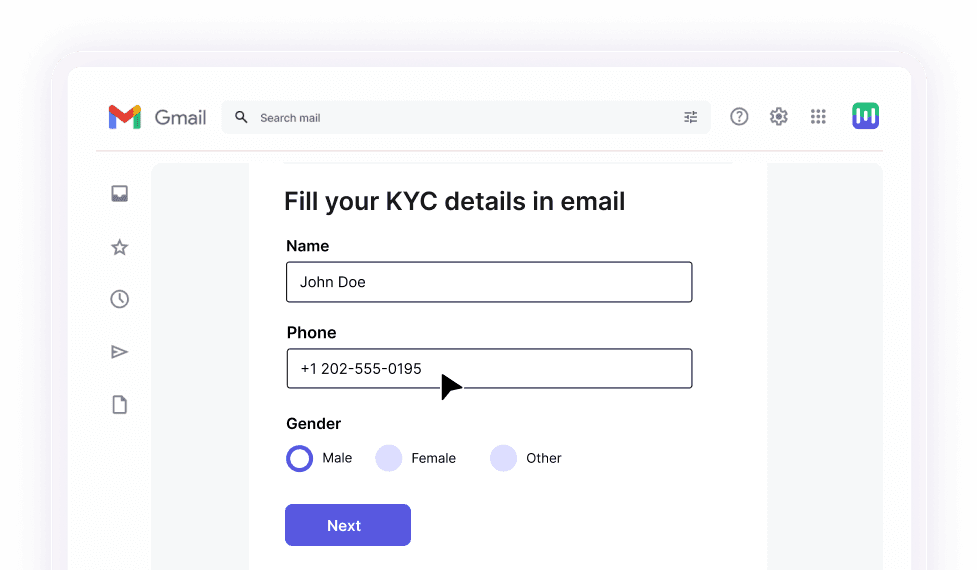What is SaaS marketing?
SaaS marketing refers to the process of promoting a SaaS product using relevant strategies and tactics.
A key aspect of SaaS marketing is using GTM (Go-To-Market) strategies, which define the marketing methods and product contributions to drive business growth.
The goal is to find prospects, persuade them to subscribe to your service, keep them engaged, and ensure they continue renewing their subscriptions on time. This is where a SaaS marketing plan comes into play.
How is SaaS marketing different from other types of marketing?
One thing that is unique to SaaS marketing is the way it generates revenue. It’s typically based on recurring subscriptions rather than one-time purchases. So, the longer the customers stay subscribed, the more revenue the company generates.
This makes customer retention a critical aspect of this business—perhaps more so than in any other industry. Your marketing strategy needs to engage customers throughout their lifecycle, focusing not only on initial acquisition but also on continuously demonstrating the ongoing benefits of your product to keep them engaged.
What is a SaaS marketing plan?
A SaaS marketing plan is a strategic roadmap that outlines how a SaaS company will attract, convert, and retain customers. It must contain all the details, including the channels to be used, the ideal customer profile, the tactics to be used and so on.
Since SaaS businesses rely on subscriptions, the marketing plan must address both customer acquisition and customer retention. It should also be flexible and data-driven, adapting to market trends, customer behaviors, and business growth.
So, let’s go through both the aspects of a SaaS marketing plan and understand how you can build one.
How to create a SaaS acquisition strategy
When it comes to SaaS acquisition, attracting the right people and getting them to sign up is key. Here's how to go about it:
Define your ideal customer profile (ICP)
Before you can acquire customers, you need to figure out who your customers are. An ideal customer profile is a detailed description of a client that would be a perfect fit for the product you sell.
When you’re creating your ICP, think about the following:
Which industries would your product be most useful for?
Are you targeting startups, mid-sized companies, bigger corporations or individuals?
Where are these customers located—specific cities, countries, or regions?
What are the biggest challenges your product can solve for them?
Done well, ICPs can help you create the right messaging for your product and position your product as the ideal solution that resonates with them.
When it comes to marketing your SaaS product, the first thing you need to do is understand who your ideal customer is and what pain points you're solving for them.
- Katarina Andrejević, Customer Advocate , Userlist.
2. Choose your acquisition channels
 Acquisition channels refer to the channels you’re going to use to attract and engage potential customers. These channels can be broadly categorized into two types:
Acquisition channels refer to the channels you’re going to use to attract and engage potential customers. These channels can be broadly categorized into two types:
Outcome-driven channels: These channels are focused on generating leads and driving conversions. They can be further divided into:
Inbound channels: These attract target customers organically by providing valuable content and solutions. Some key approaches involve SEO-optimized content, like blogs, guidebooks, checklists, infographics, and videos, webinars, and social media campaigns.
Outbound channels: These involve directly reaching out to potential customers instead of waiting for them to find you. Examples include cold outreach emails, calls, etc.
Awareness-driven channels: These focus on building brand recognition and credibility. While they may not drive immediate conversions, they help establish long-term trust and authority. Examples include word-of-mouth, industry reports and thought leadership articles.
When choosing your channels, selecting based on your specific goals, target audience, budget, team bandwidth, business size, and the nature of your product is important.
For example, if you’re a small startup with limited resources, you might prioritize outcome-driven channels like cold outreach to generate quick leads. However, if you’re a larger brand with more room for investment, you may opt for a mix of awareness-driven and outcome-driven channels to build long-term credibility and attract a larger audience.
3. Create a strategy for each channel
To develop an effective channel strategy, start by aligning it with your overall (GTM) objectives. Each channel should contribute to a broader goal—whether that’s increasing sign-ups, driving demo requests, or improving customer retention.
Once your high-level goals are set, break them down into SMART goals—specific, measurable, achievable, relevant, and time-bound. Instead of stating “increase sign-ups,” a more actionable goal would be, “Increase sign-ups by 20% in the next three months, with LinkedIn Ads driving 300 new sign-ups and content marketing efforts, like webinars and case studies, contributing 500 additional sign-ups.”
So you must plan what campaigns you’re going to run using these channels, how much traction you’re planning to get from these campaigns and how much are you willing to spend.
A well-structured channel strategy goes beyond just setting goals; it involves creating a detailed plan for each channel. This includes determining what resources are needed, who is responsible for execution, and setting deadlines.
For example, your marketing team might take charge of content creation and ad management while the sales team follows up on webinar attendees to convert them into paying customers. Defining roles and responsibilities ensures that all tasks are executed efficiently and that the overall plan stays on track.
4. Measure and iterate
Once your campaigns are live, see how it’s doing. To evaluate the performance of your channels effectively, focus on tracking the right key performance indicators (KPIs). This may vary depending on your marketing channels and goals.
For example, if you’re focusing on content marketing—such as blog posts, webinars, or eBooks—you might track metrics like page views, time spent on page, and bounce rate to understand engagement with your content.
In addition to these channel-specific metrics, broader business KPIs such as customer acquisition cost (CAC) and customer lifetime value (LTV) will help you evaluate the overall financial impact of your campaigns and acquisition efforts.
The frequency of your checks will depend on the specific goals and the nature of your campaigns. In the early stages, weekly monitoring can provide valuable quick insights. After a few weeks or months, it’s important to step back and assess the overall impact of your efforts—this is where you can measure broader metrics like CAC and LTV to determine if you’re reaching your long-term goals.
As you gather these insights, the next step is iteration. If you identify areas where performance is lacking, it’s time to refine your approach. This could involve tweaking your messaging, adjusting the targeting, or revisiting the user experience.
Iterating doesn’t mean making changes on a whim, though. It’s important to allow enough time for your changes to take effect before making further adjustments. Too frequent or minor changes may not provide enough data to assess whether they are truly effective.
💡 Related guide: A Complete Guide to Create a Successful Customer Acquisition Strategy
How to create a SaaS retention strategy
Gaining new customers is great, but retaining existing ones is where SaaS businesses maximize profitability and ensure a steady revenue stream. The following points outline how you can create a retention strategy:
Understand the customer lifecycle
When it comes to keeping your customers around, it starts with understanding where they are in their journey with your product. You’ve got to support them where they are and keep them engaged. Here are the key stages:

Onboarding: The onboarding stage is one of the most important interactions a customer has with your product. This process varies depending on how the customer enters the product. Here’s a breakdown:
For new sign-ups: Onboarding includes a simple, guided walkthrough that highlights key features designed to address the customer’s needs.
For free trial users: The focus is on helping them quickly reach their first meaningful interaction with the product. This includes showcasing the most compelling features they can experience during the trial period.
For freemium users: An introduction to the free features that they have access to, along with content that educates them on how they could be doing more with the product.
Engagement: The engagement stage includes different interactions depending on how the customer entered the product. For example, for customers who’ve already signed up, this stage is about reinforcing the value they experienced during onboarding.
On the other hand, for free trial users, engagement focuses on showcasing the core features that will make them see the product’s full value and encourage them to transition to a paid plan.
Expansion: Once customers realize the value your product brings, they start looking for ways to get even more out of it. This is the perfect time to introduce relevant features, upsells, or cross-sells that improve their experience. Whether it’s encouraging trial users to switch to a paid plan or offering premium features to freemium users who are engaged, expansion focuses on giving customers more value and deepening their relationship with the product.
Advocacy: The advocacy stage is where loyal customers become your strongest supporters, sharing their positive experiences with others.
You can offer incentives or recognition that can encourage them to leave reviews, refer you to others, and share positive experiences, which in turn helps you grow your customer base and improve your brand’s reputation.
Select your retention channels
You know where your customers are in their user lifecycle. Now, decide which marketing channels will help you keep them engaged. Here are some popular channels to consider:
Online community: Create a community where customers can share their experiences, ask questions, and connect with your brand.
Email marketing: Use targeted emails for onboarding, feature updates, and newsletters to keep customers informed.
SMS and push notifications: Send reminders for important updates, product tips, or exclusive offers to keep customers excited about your product.
Create a strategy for each channel
Once you’ve figured out which retention channels you’re going to use, it’s time to get specific with how you’ll engage your customers via each one.
Start by defining what success looks like for each channel. What are you hoping to achieve? Do you want users to engage more with the product, upgrade to a higher plan, or simply stick around longer? Whatever your goal is, make sure it’s clear for each channel so you can optimize your efforts accordingly.
Next, define what campaigns you’ll run and who’s going to be responsible for what. A successful retention strategy needs a coordinated effort. For example, one team might focus on running email campaigns, while the other might focus on creating and running social media campaigns.
You must provide content that’s both relevant and personal for your customers. Consider your customers’ current stage in their journey and create content that addresses their specific needs and desires at that point.
Implement and optimize
Once your retention strategies are planned and you have implemented them, it’s time to evaluate their performance.
The KPIs you will look into will depend on your business type and chosen customer retention channels. So, you might look at open rates, click-through rates and bounce rates for email marketing, likes, comments and shares for Facebook and so on.
Also, make it a habit to collect customer feedback to learn about any pain points in their journey. It will help you give your customers exactly what they want—which improves their satisfaction and keeps them around longer.
💡 Related guide: A Complete Guide On Retention Marketing Strategies for 2025
Challenges in SaaS marketing and how to overcome them
Take a look at some of the common SaaS marketing challenges across the industry and how to effectively solve them:

1. Economic pressure
Customers are tightening budgets in response to economic uncertainty, making them more selective about their investments.
For your SaaS businesses to stay ahead, focus on demonstrating clear value to prospective buyers. Use ROI calculators to show potential returns and support your claims with compelling case studies. These tactics will help demonstrate the direct impact of your solution.
Additionally, offer a risk-free trial or month-to-month contracts to ease potential clients’ concerns and encourage them to take the plunge. Another way to stay cost-effective under economic pressure is to consider development outsourcing as a scalable and budget-friendly alternative to full-time hiring.
2. AI disruption
With the recent boom of AI, buyers now expect AI integration in almost every product. At the same time, widespread integration has created a paradox. They are very wary of products that make vague or exaggerated claims about their AI capabilities.
To address the AI disruption, show how your AI offerings directly address customers’ pain points and bring clear benefits.
It’s also essential to keep the conversation non-technical. Avoid using complex technical jargon that could alienate non-experts, and instead, explain in simple terms how AI can make their work processes efficient.
3. SEO challenges
The rise of AI-generated content has flooded search engines, making it harder for SaaS businesses to stand out in search rankings. Plus, AI summarization tools are diluting the originality of content, affecting organic rankings and search engine visibility.
To overcome SEO challenges, SaaS marketers must focus on creating high-quality, informative, and engaging content that solves the real problems your target market faces.
Additionally, diversify your marketing channels. Don’t solely rely on SEO; incorporate email marketing, paid media, and social media campaigns to reach your customers and strengthen your overall marketing strategy.
4. Customer retention
Since the SaaS market is highly saturated, your customers can easily switch between SaaS providers. This makes retention a continuous challenge for marketers and SaaS companies.
To keep customers engaged and reduce churn, provide excellent customer experience. Personalization is a crucial requirement here. You must customize your communication based on each customer’s behavior, preferences, and usage patterns.
Also, make sure you are providing fast support and actively listening to feedback. When customers feel heard and valued, they’re more likely to stick around.
How Mailmodo can help in SaaS marketing
Email marketing is one of the most powerful ways to connect with your customers, especially for SaaS businesses. Unlike other forms of marketing, email allows you to create direct, personalized, and meaningful communication with your audience at scale. In fact, SaaS brands can use email marketing to drive both customer acquisition and retention by delivering the right message to the right person at the right time.
With Mailmodo, you don’t just send standard emails—you create an immersive experience that engages users from start to finish. Here’s a quick look at some of the standout features that make Mailmodo the perfect choice for your SaaS business:
Interactivity in emails: Embed forms, surveys, or games inside the email so recipients can interact with them within the email itself.
Dynamic segmentation: Segment your audience based on behavior, interests, or demographics that update in real-time so your segments always remain true.
Automated campaigns: Set up automated email sequences and trigger campaigns that nurture leads and onboard new customers without extra manual work.
Email analytics: Access performance metrics to measure the success of campaigns, monitor key metrics, and make quick adjustments.
Send time optimization: Schedule emails to be sent at the optimal time for specific recipients.
Mailmodo ensures that you’re not just sending emails—you’re creating experiences that drive customer success, increase conversions, and ultimately grow your SaaS business.
Try Mailmodo to grow your SaaS brand
Final thoughts
Marketing your SaaS product may seem daunting, especially with so many new products being introduced daily and the constant doubt that your offering might not measure up to the competition.
But by focusing on the key components we’ve outlined above, you can create a SaaS marketing strategy that ensures you are spending your business resources wisely.
Remember, successful SaaS marketing is an ongoing process of learning and adapting. The key is to be patient, track your performance, and continuously optimize your campaigns to reach your goals.


 Acquisition channels refer to the channels you’re going to use to attract and engage potential customers. These channels can be broadly categorized into two types:
Acquisition channels refer to the channels you’re going to use to attract and engage potential customers. These channels can be broadly categorized into two types:









